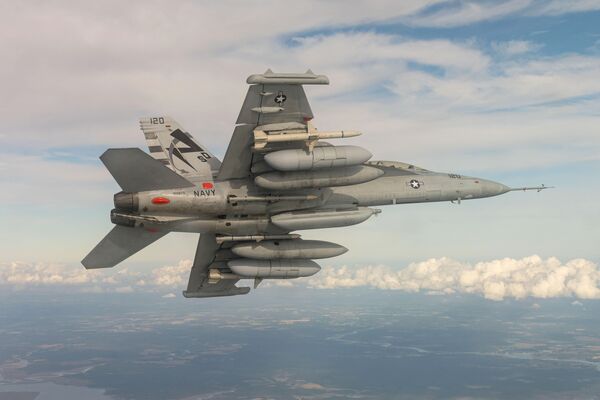
An EA-18G Growler from Air Test and Evaluation Squadron 23, located at NAS Patuxent River, conducts a flight test over southern Maryland. (US Navy)
The US Navy (USN) is moving ahead with the development of a new electronic attack (EA) capability to address shortfalls in fleet-wide requirements for airborne signal jamming operations across specific radio frequency (RF) bands.
Navy officials have selected CAES, a Northern Virginia-based company specialising in advanced RF technologies, to carry out the development work for the initial, pre-production variants of the AN/ALQ-99 Low Band Consolidation (LBC) transmitter.
The new LBC transmitter will build upon the company's work on the AN/ALQ-99 Low Band Transmitter (LBT), a modular transmitter integrated into the platform's overall Tactical Jamming System (TJS), according to a 4 April company statement issued during the Navy League Sea-Air-Space 2023 conference held in National Harbor, Maryland.
The LBT-equipped AN/ALQ-99 TJS is currently deployed aboard the Block 1 variant of the navy's fleet of EA-18G Growler aircraft, as well as Growler aircraft fielded by the Royal Australian Air Force (RAAF), company officials said in the statement. “These RF-jamming transmitters played a critical role in protecting the lives of US and Coalition forces during Operation ‘Iraqi Freedom', Operation ‘Enduring Freedom', and across the Global War on Terror,” the officials said.
AN/ALQ-99 TJS was developed to conduct “electronic countermeasure (ECM) missions” where a system or a platform is used to “trick or deceive radar, sonar, or other detection systems like infrared (IR) or lasers”, according to a navy summary of the programme.
Looking to read the full article?
Gain unlimited access to Janes news and more...







